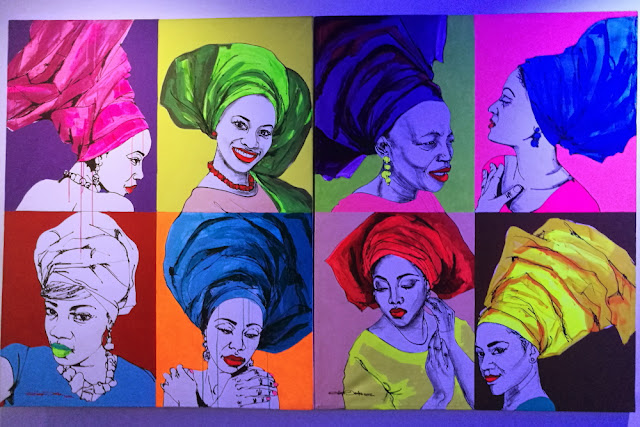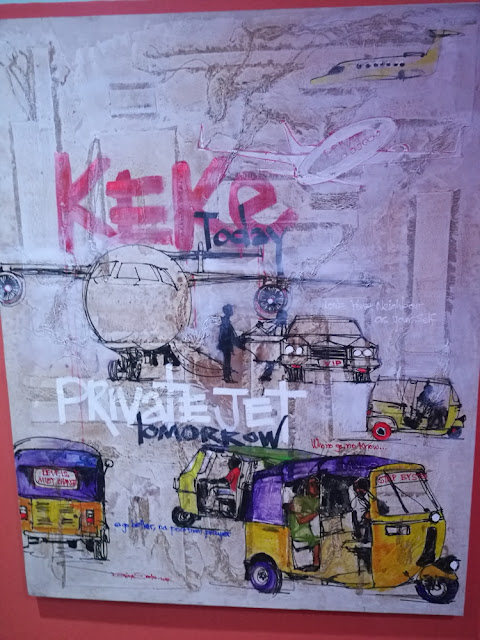 |
| Diseye Tantua, Demas Nwoko and the Demas Nwoko's seats |
African Pop Art, fascination for transportation in Nigeria and a great friendship and a partnership with artist and architect Demas Nwoko are the words that come to mind when talking about Diseye Tantua.
Both of them were are at the opening of Diseye Tantua's latest exhibition S'Art in Victoria Island curated by Arthouse at the Kia Showroom on Akin Adesola street.
A giant wooden chair with both of their faces painted in pop-art colours on the backrest was welcoming visitors on the parking lot. And not far from it was the huge blue pick-up from Diseye with a pirate-faced logo and a " D Artist" licence plate. All was told about the exhibition inside the hall. Cars and other transport means are essential to humanity, pop-art is fun and the nigerian roads are an endless source of common wisdom based upon the countless slogans painted on commercial vehicles that are plying the roads.
 |
| Traditional party headgear, Diseye Tantua |
Beyond the art of sitting (he calls it S'art for the the past tense of to sit), Diseye is painting in pop-art colours nigerian motives (lady's headgear, lady's hairstyle, Fela).
 |
| Keke today, Private Jet tomorrow, Diseye Tantua |
He also produced some spectacular reinterpretation of cars into piece of home furniture.
 |
| Red Benz 200 table and chairs, Diseye Tantua |
 |
| Front VW seat (rat rod style), Diseye Tantua |





Comments
Post a Comment